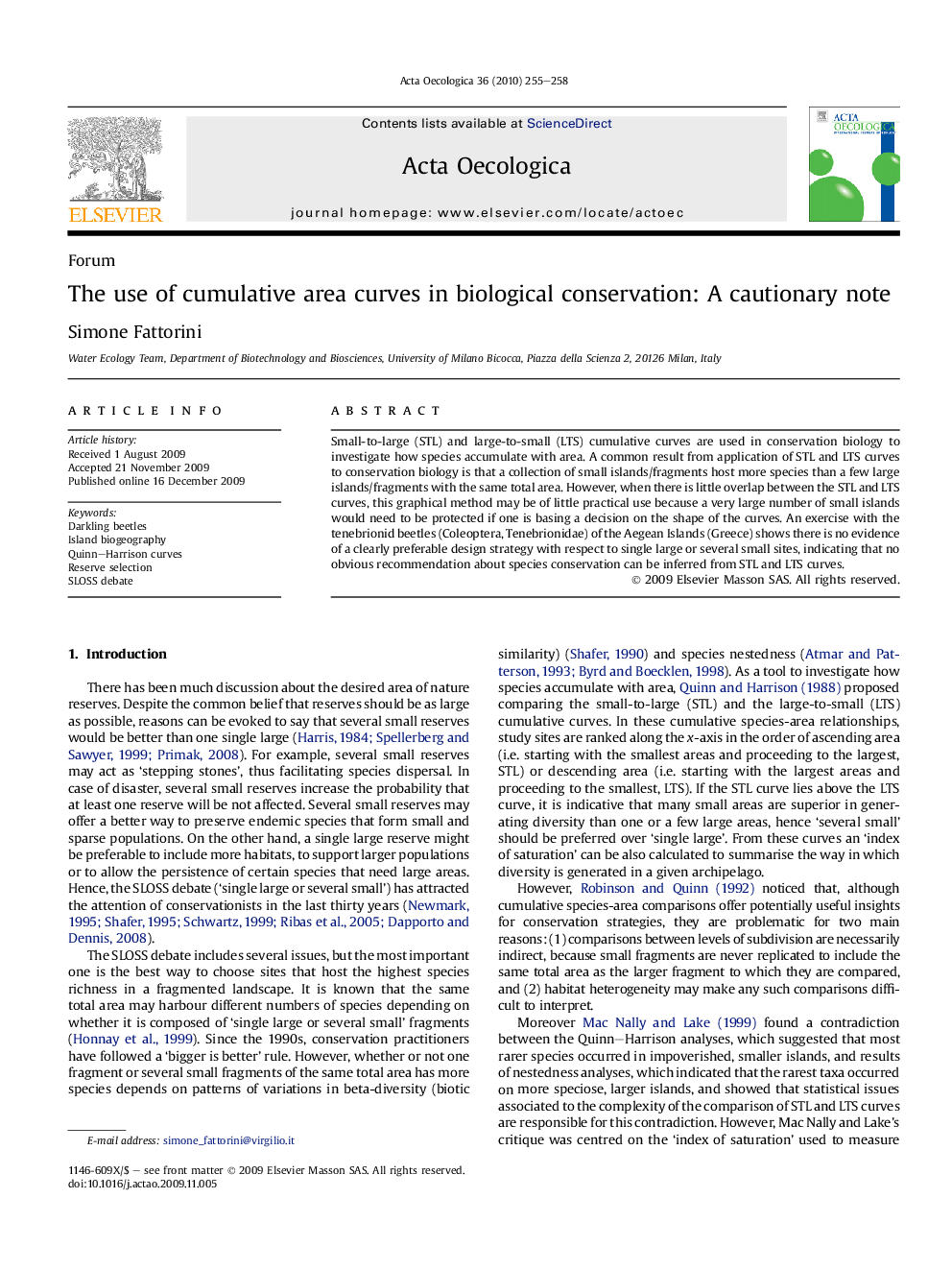| Article ID | Journal | Published Year | Pages | File Type |
|---|---|---|---|---|
| 4381685 | Acta Oecologica | 2010 | 4 Pages |
Small-to-large (STL) and large-to-small (LTS) cumulative curves are used in conservation biology to investigate how species accumulate with area. A common result from application of STL and LTS curves to conservation biology is that a collection of small islands/fragments host more species than a few large islands/fragments with the same total area. However, when there is little overlap between the STL and LTS curves, this graphical method may be of little practical use because a very large number of small islands would need to be protected if one is basing a decision on the shape of the curves. An exercise with the tenebrionid beetles (Coleoptera, Tenebrionidae) of the Aegean Islands (Greece) shows there is no evidence of a clearly preferable design strategy with respect to single large or several small sites, indicating that no obvious recommendation about species conservation can be inferred from STL and LTS curves.
